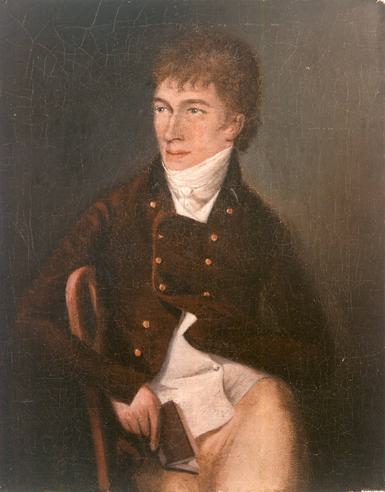
The lives of the Brontës
An introduction to Yorkshire's famous literary family
Charlotte, Emily and Anne Brontë penned some of the most groundbreaking novels in the history of English literature - including 'Jane Eyre', 'Wuthering Heights' and 'The Tenant of Wildfell Hall'.

What's their story?
The Brontë sisters grew up in Haworth, West Yorkshire, in the early 1800s. They lived in Haworth Parsonage on the edge of the moors - today the Brontë Parsonage Museum.
They had two older sisters, Maria and Elizabeth, who died aged 11 and 10 due to poor living conditions at school. They also had a brother, Branwell - their fellow playmate and a force for creativity in his own right. As children, Charlotte, Branwell, Emily and Anne invented imaginary worlds together and wrote about them in tiny books.
Patrick Brontë was their father. Originally from County Down in Ireland, he was the reverend of Haworth church and encouraged the education of his daughters. His Cornish-born wife, and mother of the Brontë children, was called Maria.
Very sadly, Maria died of cancer when her children were still young, and her sister Elizabeth (known as Aunt Branwell) moved from Cornwall to live at the Parsonage and help take care of the children. Aunt Branwell continued to look after the family until her death in 1842.
Although the Brontë family was not poor by the standards of their day, they weren't wealthy either, and the siblings were expected to earn a living.
Charlotte, Emily and Anne worked at some time or another as teachers or governesses. Branwell worked at various times as a clerk on the railway, a painter in Bradford, and as a tutor. All four siblings continued to find the greatest enjoyment and satisfaction in writing stories and poetry.

I'm just going to write because I cannot help it...
Charlotte Brontë in her journal, 1836

It was Charlotte who persuaded the sisters to publish their work. At the time, women weren't encouraged to become writers, so the Brontës used the pseudonyms Currer, Ellis and Acton Bell. This way, their writing would be judged on its merits and not by their gender. By December 1847, the sisters had succeeded in getting published.
Unfortunately, tragedy struck the family once again. The following year, Branwell died of tuberculosis aged 31, followed by Emily aged 30. In 1849, Anne also died from the same disease at just 29 years old. Charlotte continued to live in the Parsonage with her father and published two more novels.
In 1854, Charlotte, now a famed novelist, married her father's curate, the Reverend Arthur Bell Nicholls. The following year, Charlotte died - believed to be the result of pregnancy complications. She was 38.
Patrick Brontë outlived his children, dying aged 84 - but the legacy of the Brontë family lives on, in the novels that continue to inspire and captivate readers to this very day.



